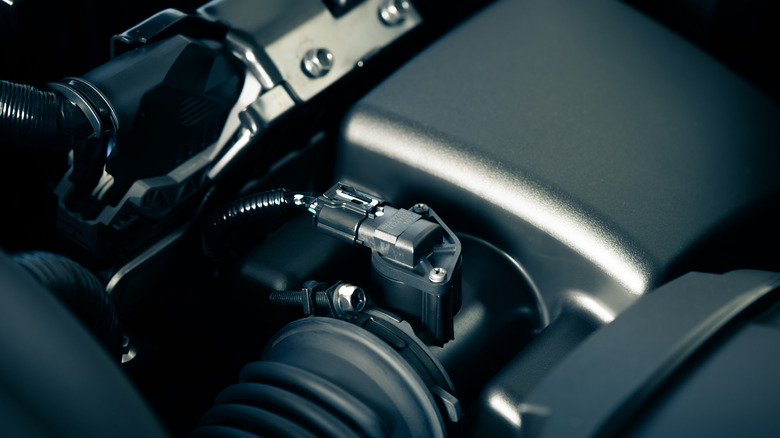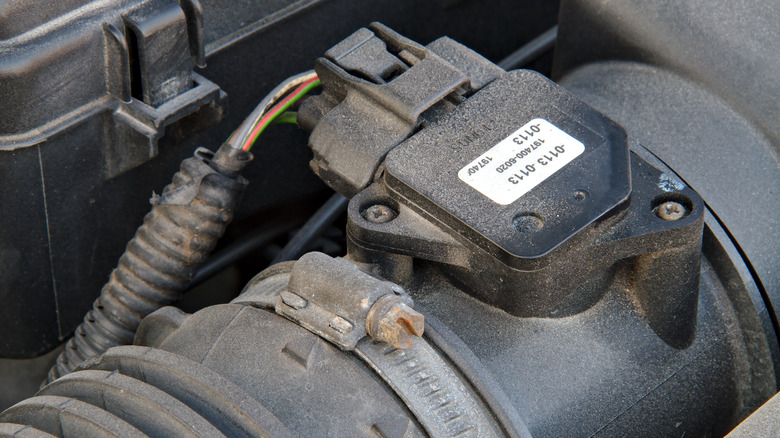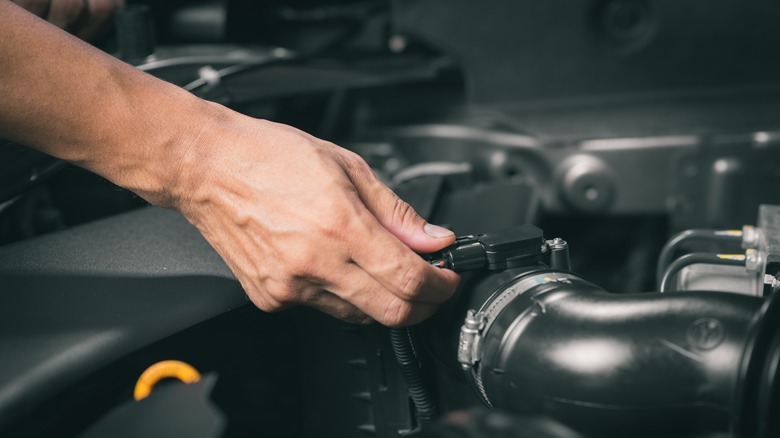This One Dirty Sensor Could Be Ruining Your Car's Performance (But It's Easy To Clean)
Your engine needs a steady stream of clean air to function properly, and it's the job of the mass air flow (MAF) sensor to measure and regulate the amount of clean air entering the intake. The engine control unit (ECU) uses this information to keep the air-fuel ratio in check, which ensures that the engine runs at its best and most efficiently. But when the MAF sensor gets dirty, which is a surprisingly common problem, it can cause the car to accelerate slowly, idle roughly, experience poor fuel economy, and even stall.
The sensor can get dirty from things like dust, oil, and even cleaning products that are used on aftermarket air filters. The MAF sensor is highly sensitive and precise, so even the smallest amount of buildup can throw its readings off. Cleaning it is easy and affordable and doesn't need any form of specialized mechanical skills, which is a major positive. Most drivers can get their cars back to optimal performance in no time with a simple MAF sensor cleaner.
It's very possible that if your car isn't running well, it could mean your MAF sensor needs a check, regardless of whether you have a cheap or expensive car engine air filter. This is a classic case of a small problem escalating into a larger one, especially if it remains unaddressed.
What the MAF sensor does and why it's important
Usually, the mass air flow sensor is positioned between the intake manifold and the air filter. The primary function of this part is to measure the amount and density of air entering the engine. The ECU, which is mainly known for getting more power out of your car, requires this information to figure out how much fuel to put into the combustion chamber. If the sensor gives bad data, it messes up the whole balance, which makes combustion less efficient.
It's easy to misdiagnose a dirty or faulty MAF sensor because its symptoms can look like those of other mechanical problems. Even the slightest amount of dirt can disrupt the calculations of the air-fuel mixture, potentially causing the check engine light to illuminate or the engine to lose power. People often overlook issues with the MAF sensor, leading to unnecessary repairs or parts replacements.
Drivers might notice that the car has trouble carrying heavier loads, uses more gas, or makes strange engine noises. In newer cars with advanced ECUs, a broken MAF sensor can also make the emissions system less effective, which could make your car fail an emissions test.
How to safely clean your MAF sensor
Not only is it simple to clean a MAF sensor, it's also one of the easiest things you can do to keep your car in good shape. First, make sure the engine is cool and off. Thereafter, unplug the sensor from the electrical connector and the intake system. It's important to use a cleaner made just for MAF sensors because other cleaners can damage the sensor parts.
Making sure not to touch the wires or sensing elements, carefully hold the sensor by the housing or place it down on a towel, and proceed to spray with 10-15 controlled blasts of air. Before putting the sensor back in, make sure to let it dry completely. The drying should take about 10 minutes, and when that's done, securely reinstall it back into place and wait another few minutes to ensure any cleaning chemicals evaporate. Your ECU should now be reading airflow data correctly again, and it could fix a few of your performance problems without the need for expensive diagnostics.
It's a good idea to check your MAF sensor if you haven't cleaned it in a while, especially if it has more than 25,000 miles on it. This hassle-free maintenance task is well worth your time, as it could be the answer to restoring your lost power and improving fuel efficiency with little effort or money.


